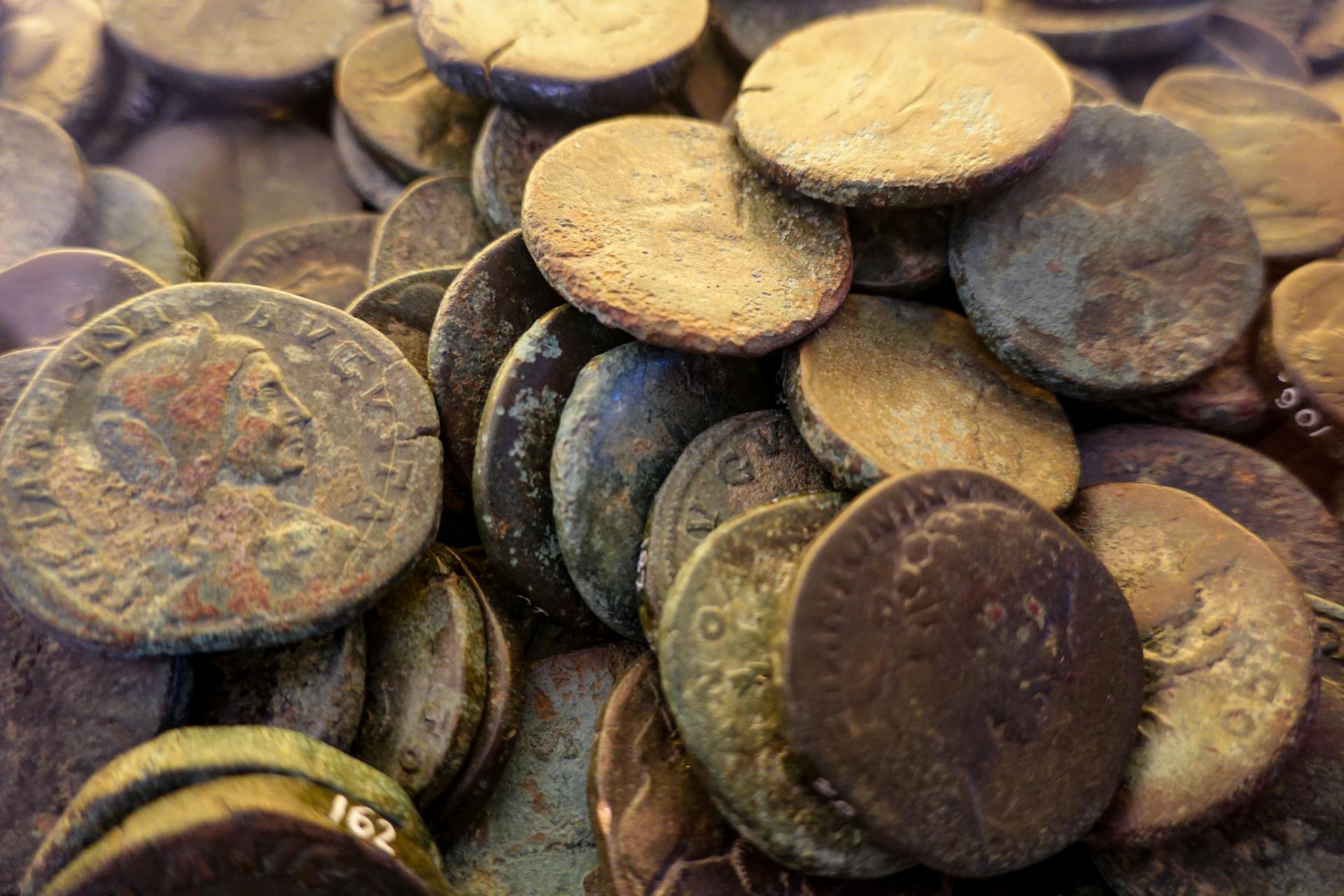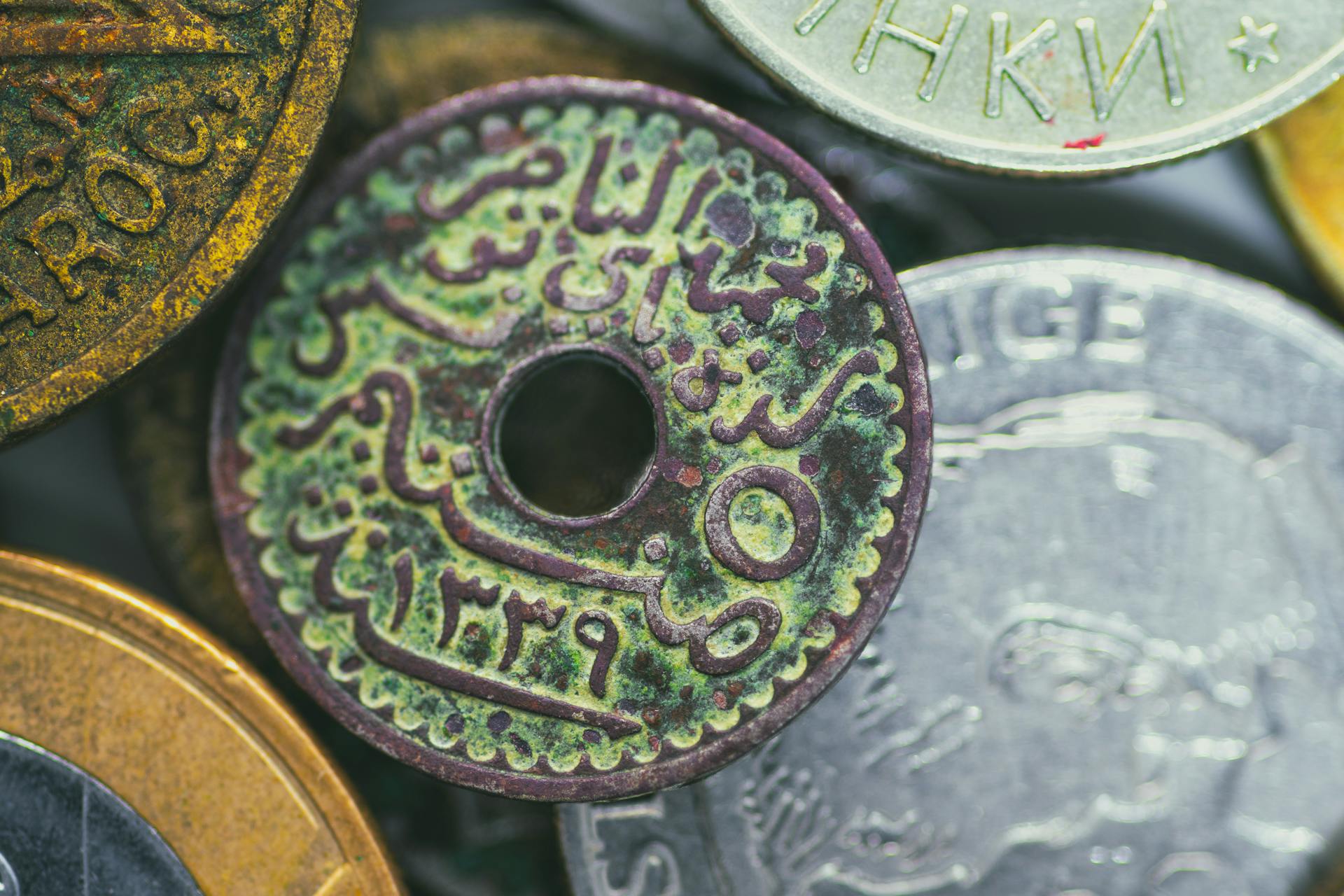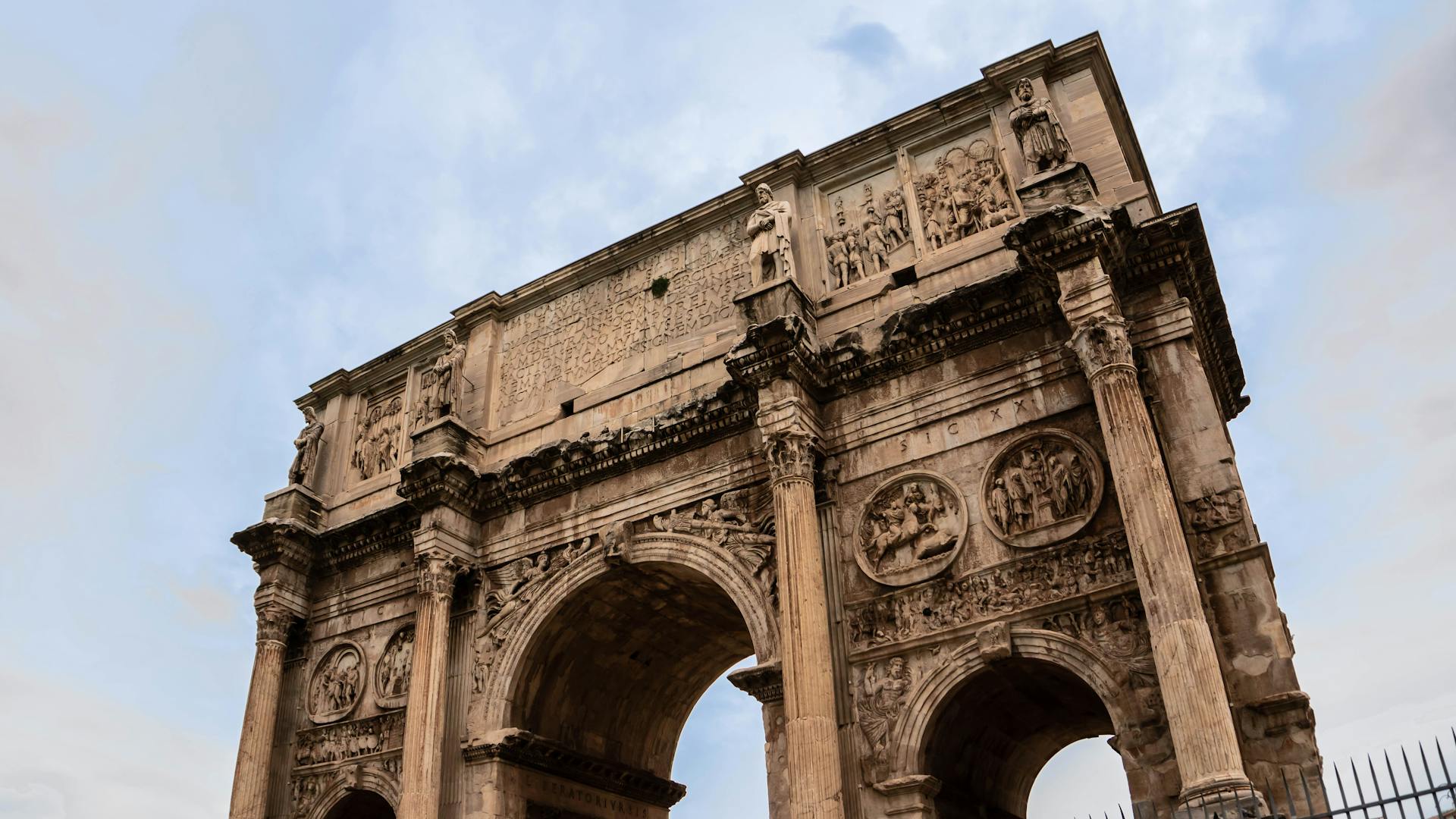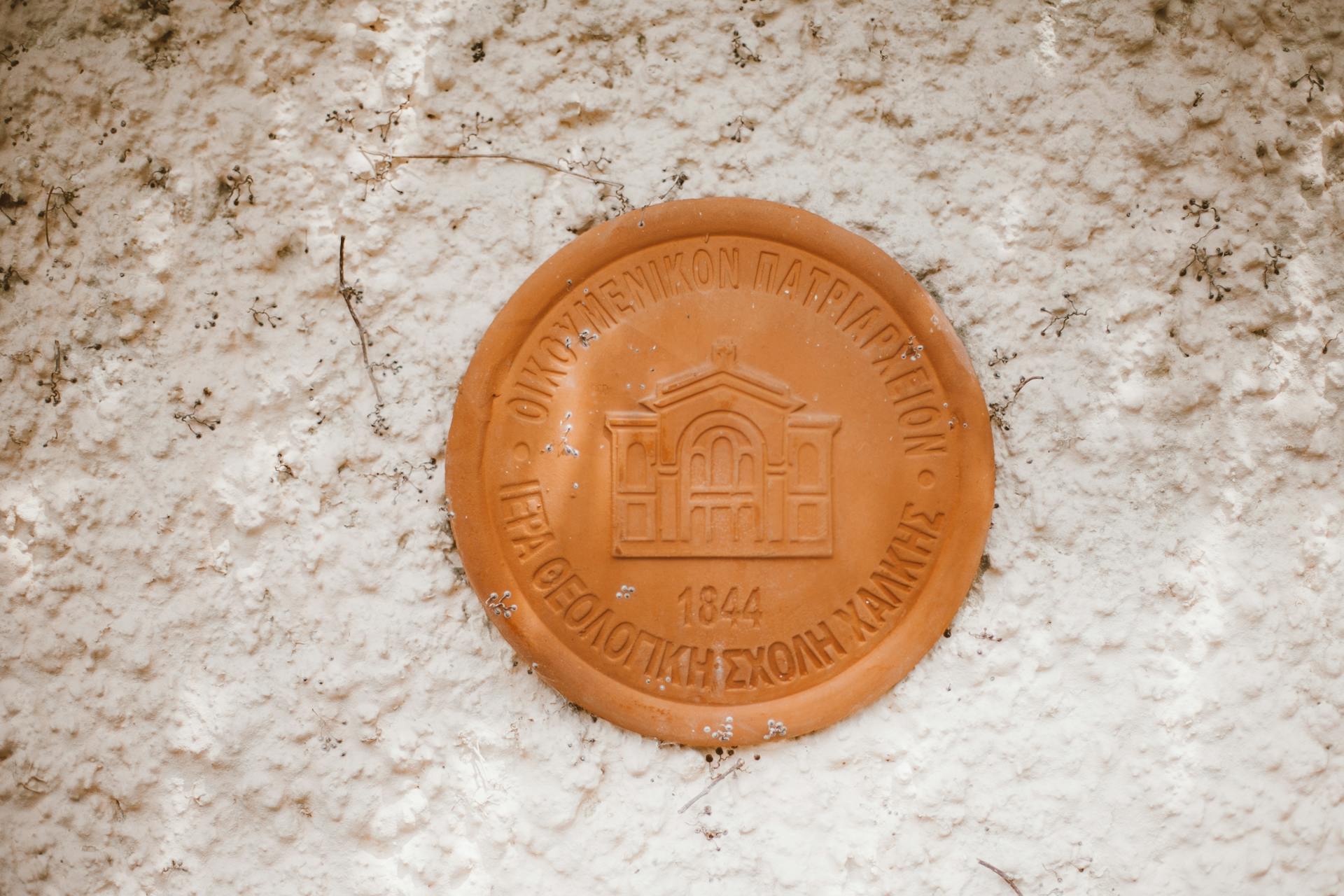
The Ancient Greek Drachma was a widely used currency in Ancient Greece. It was introduced around 700 BC and remained in use until the 4th century AD.
The Drachma was divided into smaller units, with the Obol being one-sixth of a Drachma. This division made it easier for people to make small purchases.
The Drachma was not only used for financial transactions but also as a unit of account for measuring the value of goods and services. This versatility made it a vital part of the Ancient Greek economy.
In Athens, the Drachma was the standard unit of currency, and it was used to pay for everything from food to theater tickets.
Recommended read: How Is Us Currency Made
Origins and History
The drachma's name is derived from the verb δράσσομαι (drássomai), which means "(I) grasp." This makes sense, given that the original drachma was a fistful of six metal sticks called oboloi.
These oboloi were used as a form of early currency, beginning around 1100 BC, and were made of bronze, copper, or iron ingots denominated by weight. They were used in burials of warrior elite or people with high social status.
The drachma was the standard unit of silver coinage at most ancient Greek mints, with the obol being one-sixth of a drachma.
A unique perspective: What Currency Is Used in Prague Czech Republic
Origins
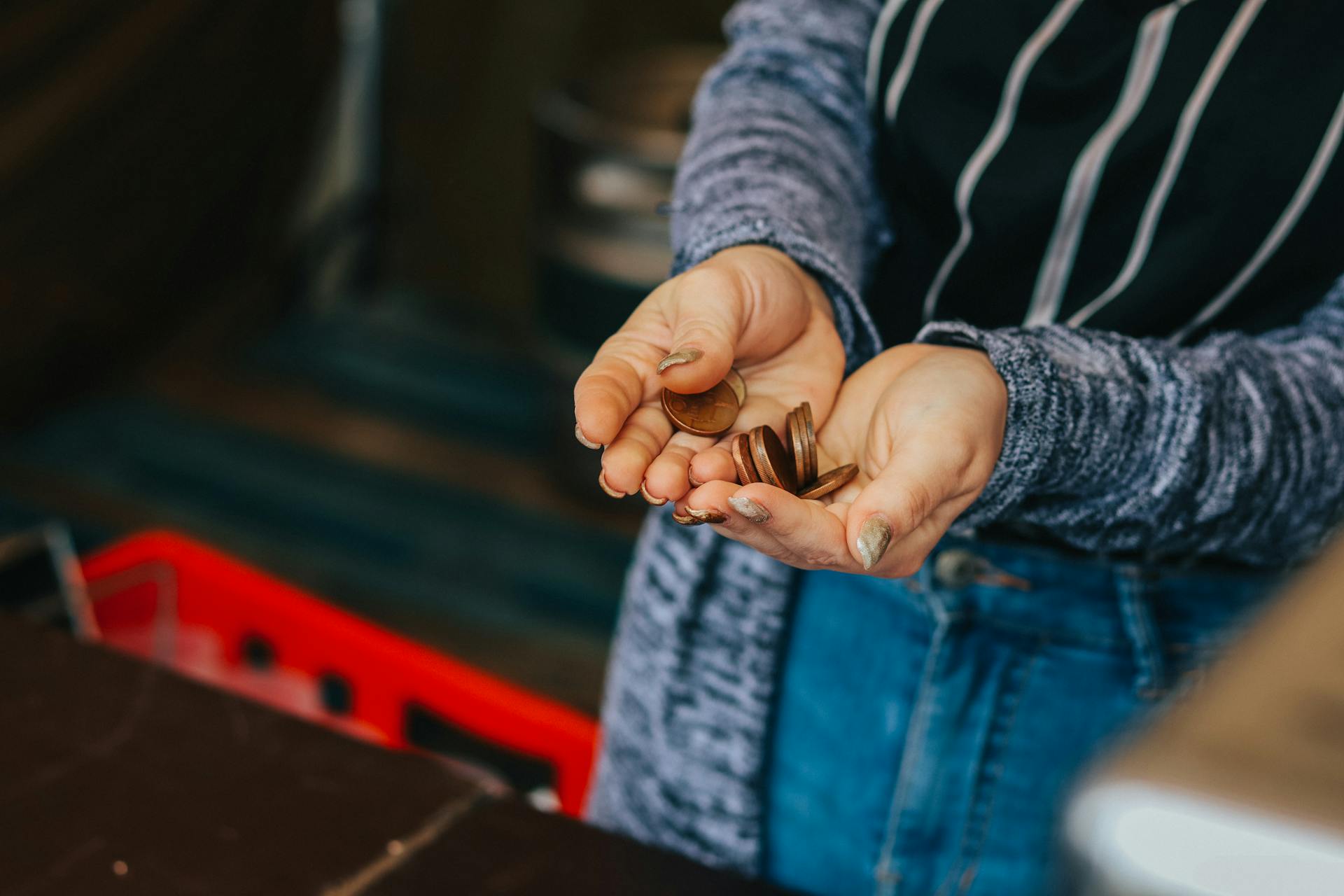
The origins of the drachma date back to ancient Greece, where it's believed to have derived from the verb δράσσομαι (drássomai), meaning "(I) grasp".
The name drachma is thought to refer to a fistful of metal sticks, known as oboloí or obeloí, used for roasting lamb. These early coins were likely used as a form of early currency, beginning around 1100 BC.
Anthropological evidence suggests that obeloi were used in burials of warrior elite or in the graves of people with high social status. A hoard of over 150 rod-shaped obeloi was uncovered at Heraion of Argos in Peloponnese.
The obeloi discovered at Argos were the first found completely intact, and six of them are now displayed at the Numismatic Museum of Athens.
The drachma was the standard unit of silver coinage at most ancient Greek mints, and the name obol was used to describe a coin that was one-sixth of a drachma.
Suggestion: Name of Swedish Currency
Archaic Period (Until 480 BC)
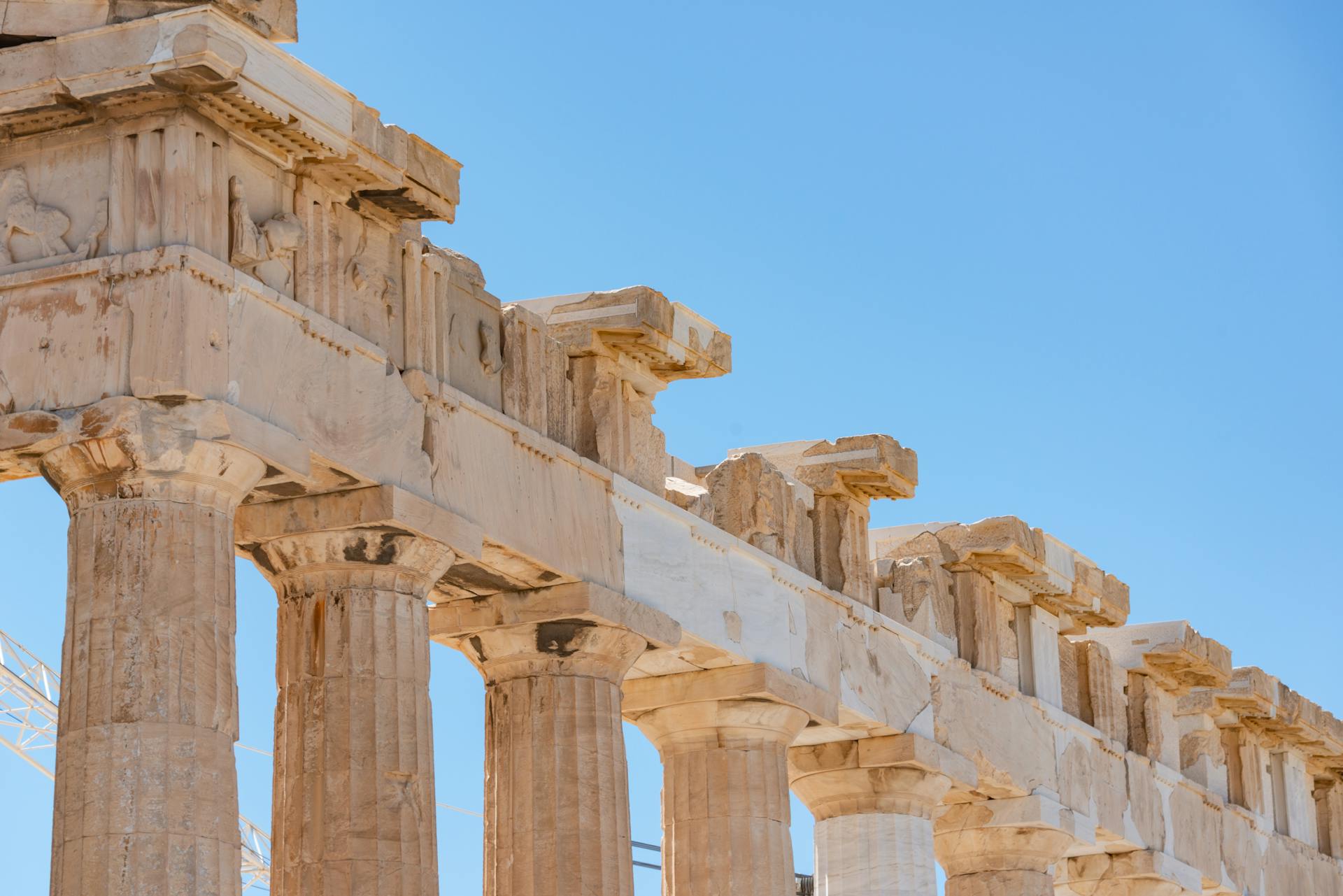
During the Archaic Period, the Drachma was a significant part of ancient Greece's economy. The Drachma was minted from a large silver vein found near Athens in 483 BCE.
In 483 BCE, a large silver vein was found near Athens, which was used to mint large amounts of Drachma. This led to a substantial increase in the Drachma's circulation.
The Drachma played a crucial role in the construction of 200 Trireme ships, which was ordered by Themistocles. The construction of these ships made Athens the most significant naval power in the area.
The Drachma's influence extended beyond ancient Greece, as it influenced later Roman and Parthian Coinage.
Consider reading: 1943-s Steel Penny Value 2023
The Drachma
The Drachma was originally worth six Obols, but this would change from city-state to city-state.
The average Drachma weighed around 4.5 grams and had a purity of 90% silver. This was a significant value, especially considering the advanced technology and craftsmanship that went into minting these coins.
Explore further: Turkish State Mint
The Drachma was the standard unit of silver coinage at most ancient Greek mints, and the name obol was used to describe a coin that was one-sixth of a drachma.
The Athenian Tetradrachma, with the famous Owl on one side and Athena's portrait on the other, is one of the most recognizable Drachmas. This coin helped build Athens into the economic powerhouse it was known as throughout the ancient world.
Here are some notable Drachma coins from ancient Greece:
- Aegina coin type, incuse skew pattern. Circa 456/445–431 BC.
- Coin of Akanthos, Macedon. Circa 470–430 BC.
- Coin of Aspendos, Pamphylia. Circa 465–430 BC.
- Coin from Korkyra. Circa 350/330–290/270 BC.
- Coin of Cyprus, circa 450 BC.
Characteristics and Design
Ancient Greek coins were often named after their designs or the city-state that minted them. The Athenian tetradrachm, for example, was called the owl.
Each city-state had its own unique designs and symbols on its coins. The Corinthian stater, for instance, was called the hippos, or horse.
The designs on ancient Greek coins were often chosen to represent the city-state's values or mythology. The owl of Athena, which appeared on the silver tetradrachm coins of Athens, was a popular design that symbolized the city's patron deity.
For your interest: Which Country Does Not Use Euro as Its Currency
Coins from different city-states often carried specific designs that were instantly recognizable. The Boiotian shield, for example, was a distinctive symbol of Thebes.
Local plants and flowers were also popular choices for coin designs. The celery leaf, for instance, was used to represent Selinus.
Ancient Greek coins often had simple geometric shapes stamped into the reverse side, especially a quartered square. Later, minters and administrators saw the reverse side as an opportunity to double the visual message.
Characteristics and Design
Ancient Greek coins had distinctive names in daily use, such as the Athenian tetradrachm being called the "owl".
Each city-state had its own unique symbols and inscriptions, which were often referred to by the name of the city or the image depicted.
Coins were made of silver, with gold being a rare exception, and their exchange value was determined by the quantity and quality of the metal.
The exact value of each coin was reflected in its reputation, with some mints being more trusted than others.
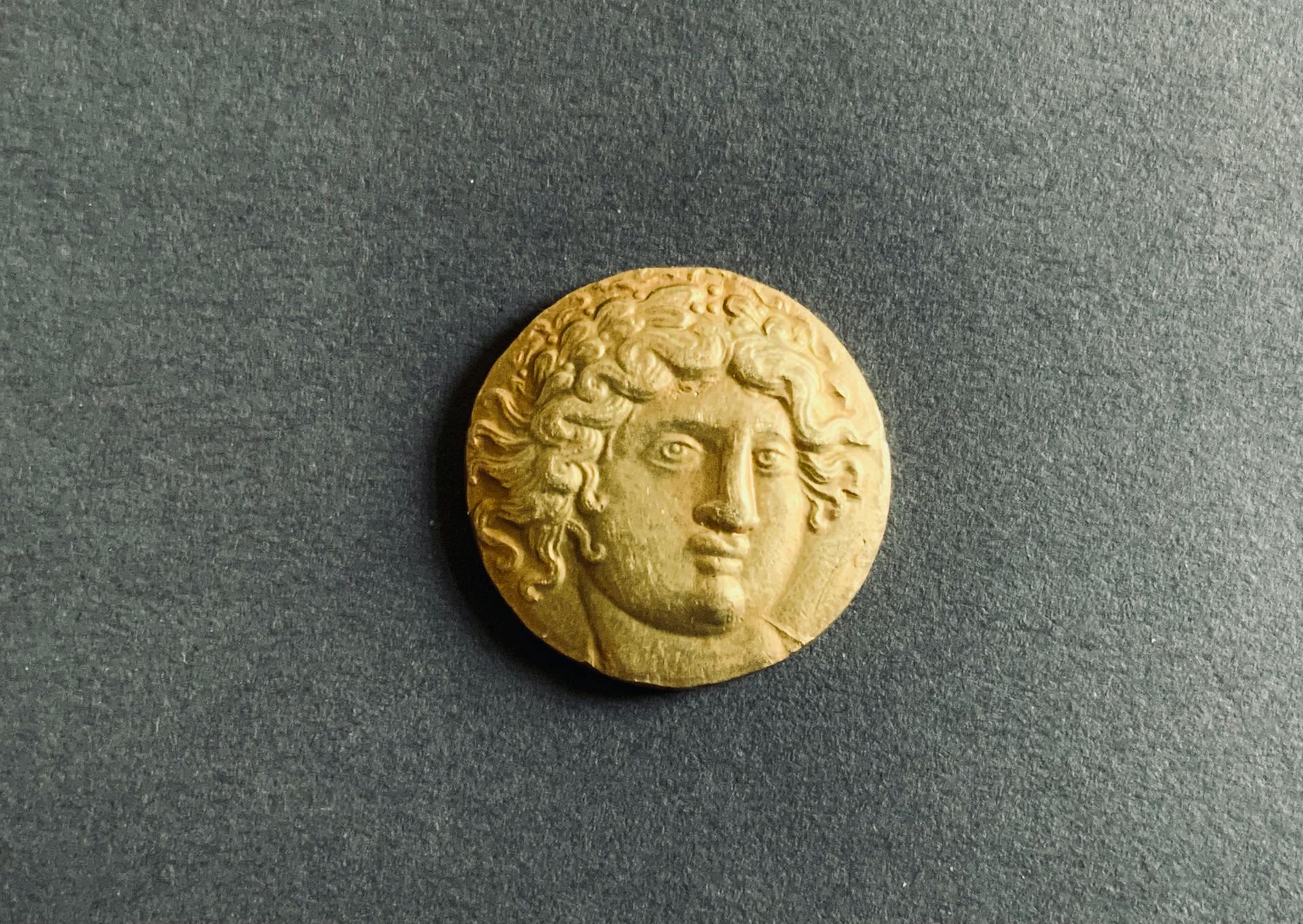
Greek city-states used coins as a symbol of their prestige and power, depicting unique symbols or features that represented their city.
The Corinthian stater, for example, featured Pegasus, the winged stallion, tamed by their hero Bellerophon.
Coins of Ephesus depicted the bee sacred to Artemis, while Drachmas of Athens showed the owl of Athena.
Local plants and flowers were also popular choices of symbol, such as the celery leaf for Selinus and the rose for Rhodes.
Charioteers and the lyre were common emblems, appearing on coins from Sicily to Macedon.
By the end of the Classical period, rulers were using coins as a means of propaganda to associate themselves with gods and heroes like Hercules.
The reverse side of early coins often had a simple geometric shape, such as a quartered square, but later mints added more designs to double the visual message.
The Athenian owl on the silver tetradrachm coins of Athens is one of the most famous designs, appearing on the reverse side.
Some coins had short inscriptions, like a single letter, such as an Athe for Athens or Koppa for Corinth.
Here's an interesting read: Does Vatican City Have Its Own Currency
Weight Standards
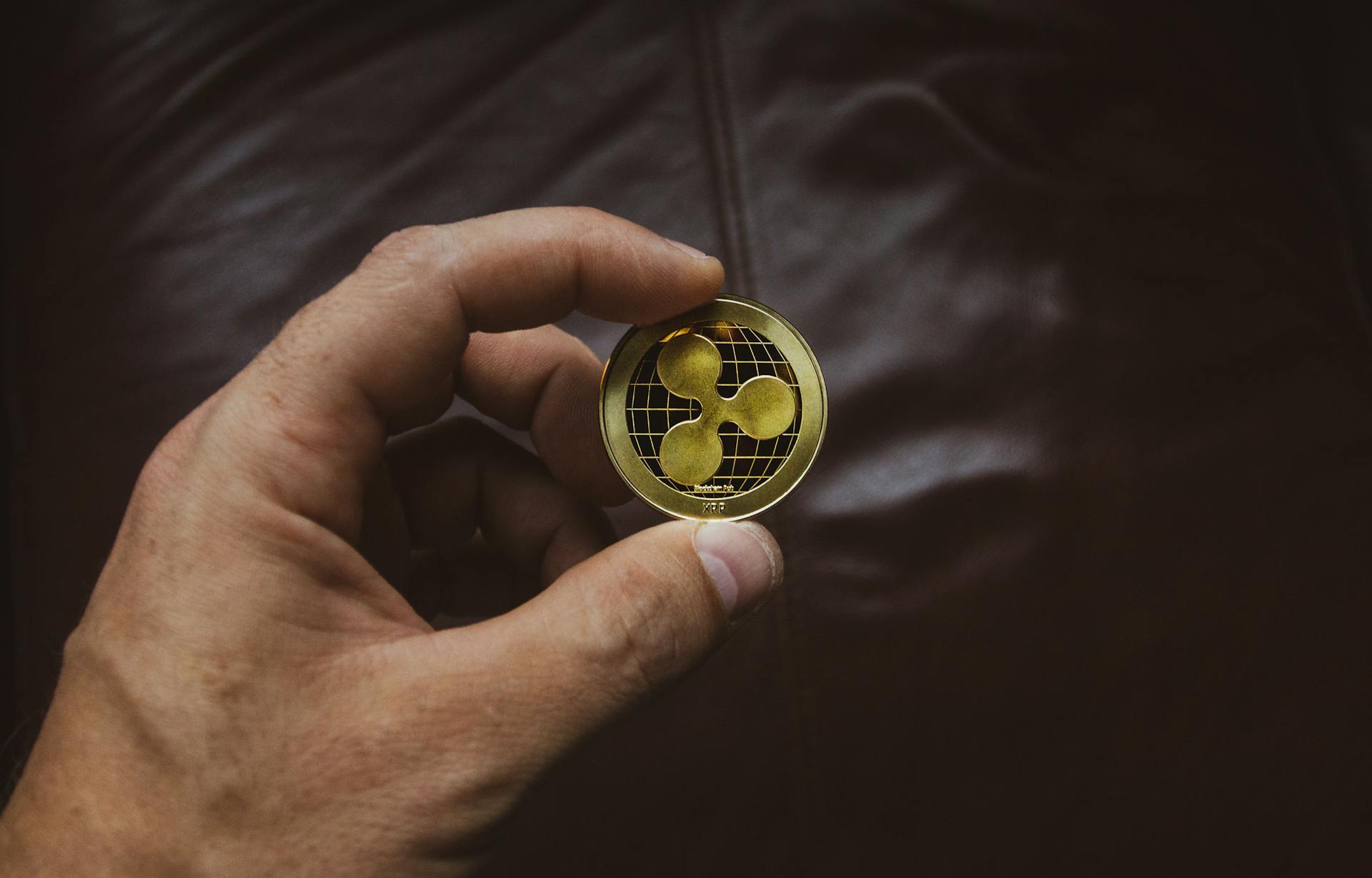
The weight standards of ancient Greek coins varied from city-state to city-state, but the Attic standard, based on the Athenian drachma of 4.3 grams, was the most commonly used.
The Attic standard was divided into smaller denominations, including the drachma, which was further subdivided into six obols. Each obol weighed 0.72 grams.
The Corinthian standard, based on the stater of 8.6 grams, was subdivided into three silver drachmas of 2.9 grams each. The Aeginetan stater or didrachm of 12.2 grams was based on a drachma of 6.1 grams.
Here's a table summarizing the weights of different denominations of silver drachma:
The average drachma weighed around 4.5 grams, with a purity of 90% silver.
What Was the Drachma Made Of?
The drachma was made with silver, but over time it became debased as copper was introduced into the silver.
The average Drachma weighed around 4.5 grams and had a purity of 90% silver.
Initially, the drachma was made with pure silver, but its composition changed over time due to the introduction of copper.
The use of silver in Athenian coins made them highly valued and sought after, with the valuable metal being gathered from the Laurium Mines in Attica.
The Athenian Tetradrachma, a popular drachma coin, featured a helmeted profile bust of Athena on the obverse and an owl on the reverse, and was known for its purity and consistency in weight.
Geographic Spread and Use
The drachma was widely used in ancient Greece, with over 20 cities minting their own coins, including Athens, Corinth, and Sparta. Many of these coins only circulated within their respective regions, and there was no universal standard.
Most coins were minted in small denominations, with fractions and multiples of the drachma being common. In fact, Ptolemaic Egypt was known for minting large coins in gold, silver, and bronze, including the impressive gold pentadrachm and octadrachm.
The use of coins extended beyond trade, with coins being used for religious purposes, such as dedications at shrines and temples.
Classical Period (480-323 BC)
During the Classical period, Greek coinage reached a high level of technical and aesthetic quality. Cities like Syracuse produced some of the finest coins, with the large silver decadrachm coin from Syracuse being regarded by many collectors as the finest coin produced in the ancient world.
The use of inscriptions on coins began during this period, usually featuring the name of the issuing city. The tyrants of Syracuse were fabulously rich and used their wealth to fund quadrigas for the Olympic chariot race, a very expensive undertaking.
Syracusan issues were rather standard in their imprints, with one side bearing the head of the nymph Arethusa and the other usually a victorious quadriga. The engravers Kimon and Euainetos led the way in producing some of the finest coin designs of antiquity in Syracuse.
The city of Aegina produced a coin type featuring an incuse skew pattern around 456/445–431 BC.
Geographic Spread
The drachma was widely used in ancient Greece, with over 30 Greek cities minting their own coins. One notable example is Athens, which used the drachma extensively.
For another approach, see: Where Are Dinars Used
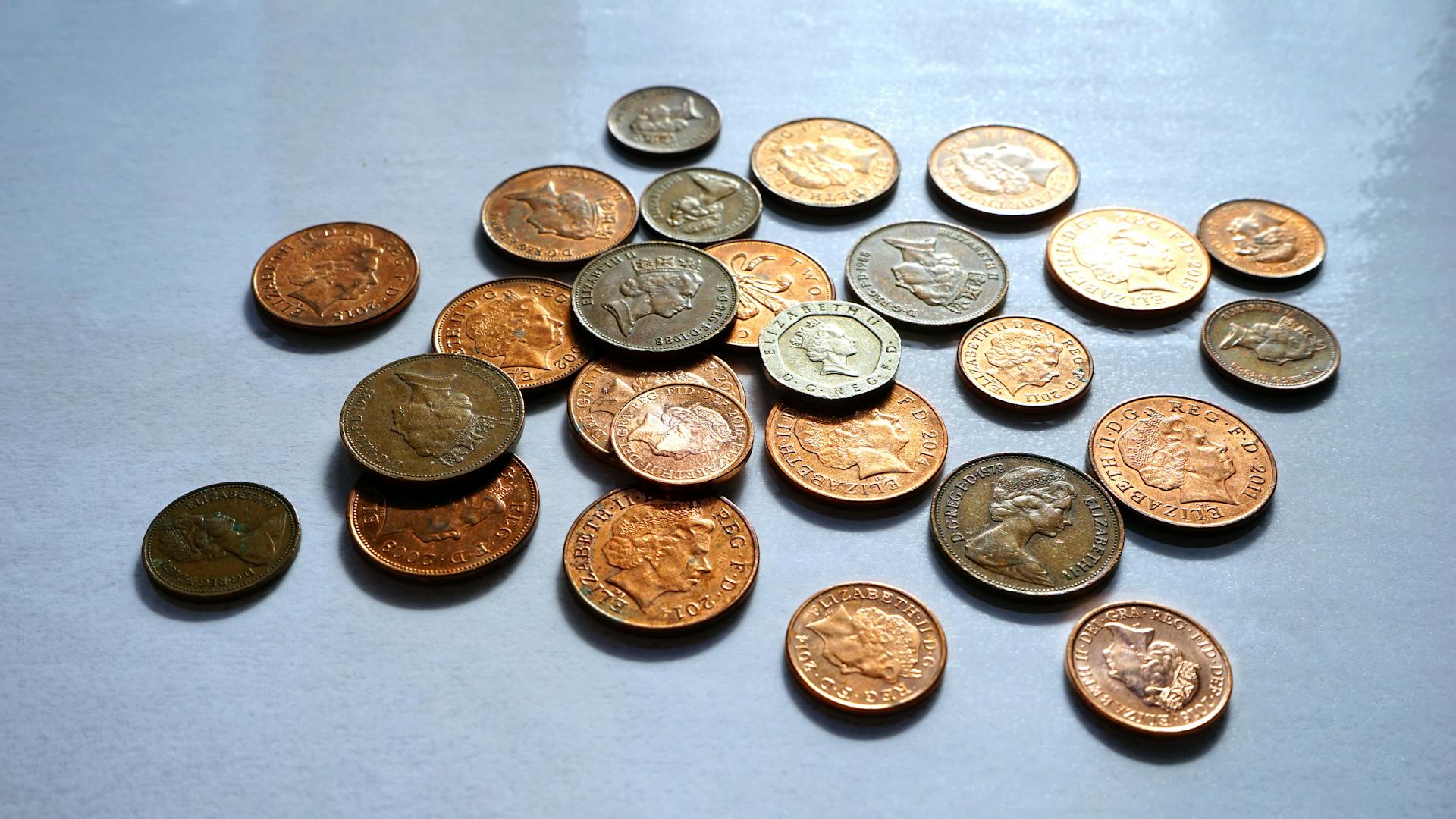
Many of these cities had their own unique coins, with varying denominations and materials. Ptolemaic Egypt, for instance, minted large coins in gold, silver, and bronze.
The use of the drachma was not limited to Greece, as it was also used in other Hellenistic kingdoms in the Middle East. The name drachma was even inherited by the Arabic unit of currency known as the dirham.
The drachma was used for various purposes, including trade, religious offerings, and even as a tool for empire building. Coins were often used as symbols of sovereign identity, similar to how flags are used today.
The use of coins in ancient Greece was not just limited to economic transactions, but also played a significant role in social events such as marriage and the transfer of land.
Athenian Coinage and Denominations
The Athenian tetradrachm, also known as the four-drachma coin, featured the helmeted profile bust of Athena on the obverse and an owl on the reverse. This coin was widely used in the Greek world prior to the time of Alexander the Great.
Athenian coinage was especially attractive due to the purity of the silver used to create each coin, which was gathered from the Laurium Mines in Attica. The Athenian state strictly oversaw the mining, bringing great wealth into the treasury.
The tetradrachm was one of the few coins accepted internationally and was used as a form of exchange in various city-states. The popularity of Athen's coinage can be contributed to numerous laws restricting local traders to exclusive use of Athenian coinage abroad.
The weight of the silver drachma was approximately 4.3 grams, with the Athenian or Attic standard being the most commonly used. This standard weighed a little over 4.3 grams of silver.
The Athenian drachma was divided into six obols, with the obol being further subdivided into tetartemorioi, which represented 1⁄4 obol or 1⁄24 drachm.
Athenian Coinage and Denominations
The Athenian coinage system was a marvel of its time, with a purity and consistency that made their coins highly sought after. Athenian coins were minted on the Athenian or Attic standard, which weighed a little over 4.3 grams.
Each city-state had its own unique symbol or feature on its coins, known as an emblem or badge in numismatics. The Athenian tetradrachm, for example, featured the helmeted profile bust of Athena on the obverse and an owl on the reverse.
The tetradrachm was perhaps the most widely used coin in the Greek world prior to Alexander the Great. It was subdivided into smaller denominations, including the drachma, obol, and tetartemorion.
Here's a breakdown of the Athenian coin denominations:
These smaller denominations were often used for everyday transactions, while the tetradrachm was used for larger purchases and international trade. The Athenian coinage system was a testament to the ingenuity and craftsmanship of the ancient Greeks.
Value Comparison
A drachma, the primary currency of ancient Athens, was equivalent to about $0.14 in 1885. This is based on an estimate by William Goodwin, who calculated the value of a Solonic talent in silver.
The daily wage for a skilled worker or hoplite in ancient Greece was one drachma, which is roughly equivalent to a day's wages in 1968, when the US federal minimum wage was $1.60.
Suggestion: Modern Drachma
A laborer might earn one-third of a drachma per day before the Peloponnesian War, which caused significant inflation. This is a stark contrast to the average yearly wages in the United States in 2022, which were $77,463.
Food and clothing were expensive in ancient Athens, with a gallon of olive oil costing three drachmae and cloaks ranging from five to twenty drachmae.
The weight of silver in a Solonic talent was estimated to be worth approximately $877 in 1885, making a drachma worth about $0.14 at that time.
Expand your knowledge: Series B Banknotes
Collecting
Collecting ancient Greek Drachma can be a fascinating and rewarding hobby. The ancient Greek Drachma is one of the most desired types of ancient Greek coins.
You'll find a wide variety to choose from, thanks to the many Greek cities that minted their own coins. The Drachma was minted similarly to the Obol, with them being struck in multiples or fractions.
To get started, consider buying a Drachma that has been graded and certified by a reputable coin grading company. This will ensure its authenticity and value.
Related reading: What Is a Minted Coin
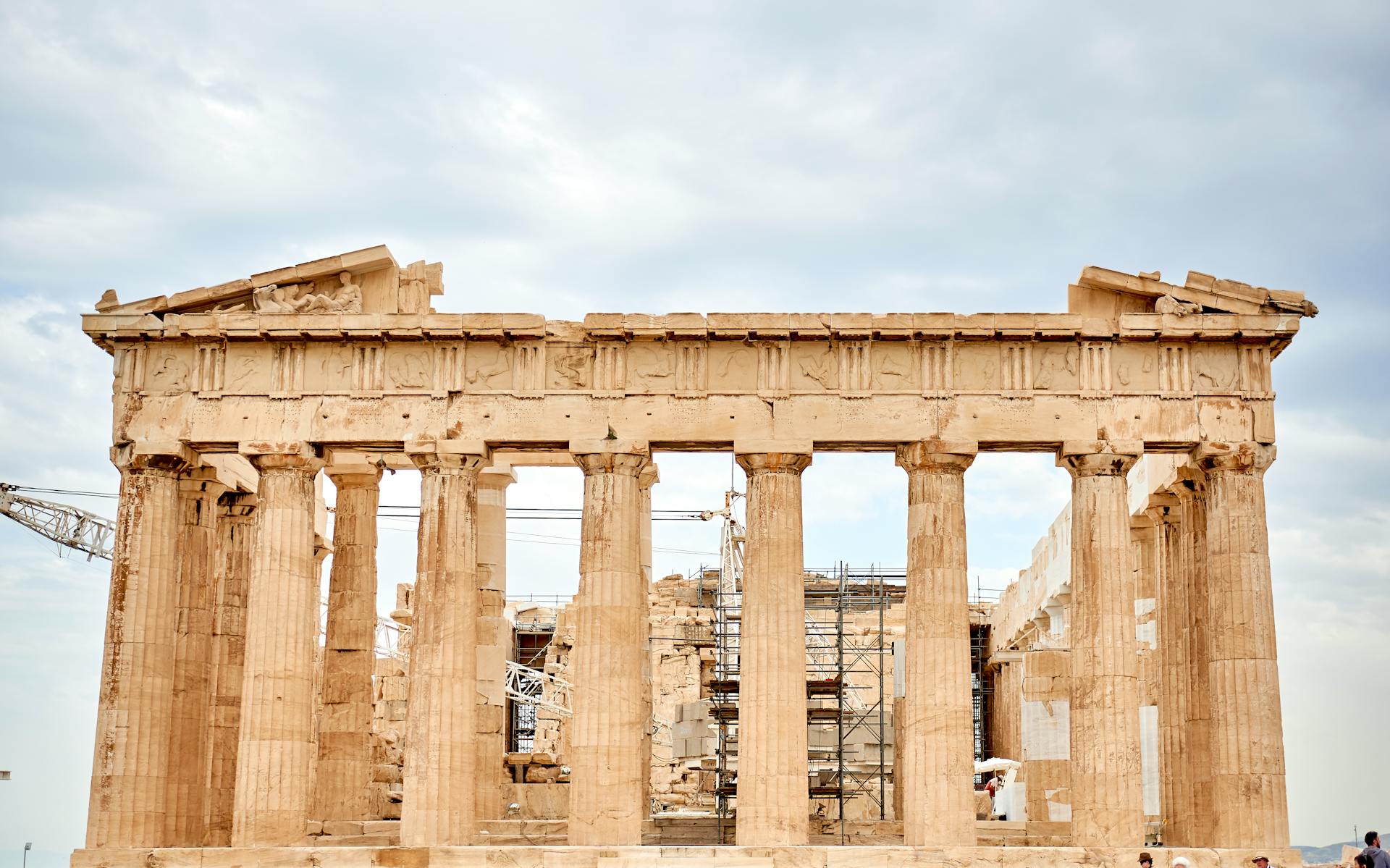
Some popular options include the Didrachma (worth two Drachma) and the Tetradrachma (worth four Drachma). These coins are highly sought after by collectors.
If you're interested in collecting Modern Drachma, you may find them in the form of paper currency or non-precious metal coins. However, the more valuable ancient varieties are often the most desirable.
You can find ancient Greek coins in various collections around the world, including the British Museum, the American Numismatic Society, and the Danish National Museum. These collections are considered to be among the finest.
If you're interested in purchasing ancient Greek coins, several auction houses in Europe and the United States specialize in ancient coins. You can also find a large online market for such coins.
Here are some of the most common types of ancient Greek coins:
Frequently Asked Questions
How much was an ancient Greek drachma worth?
A drachma in ancient Greece was roughly equivalent to $25-$38 in modern US dollars, depending on the time period. This value gives context to the daily wages and economy of ancient Greece.
Are Greek drachma notes worth anything?
Greek drachma notes have no monetary value, but their collector's value can be exchanged for cash. If you have pre-euro Greek Drachma notes, you may be eligible for a cash exchange reflecting their numismatic value.
Featured Images: pexels.com
